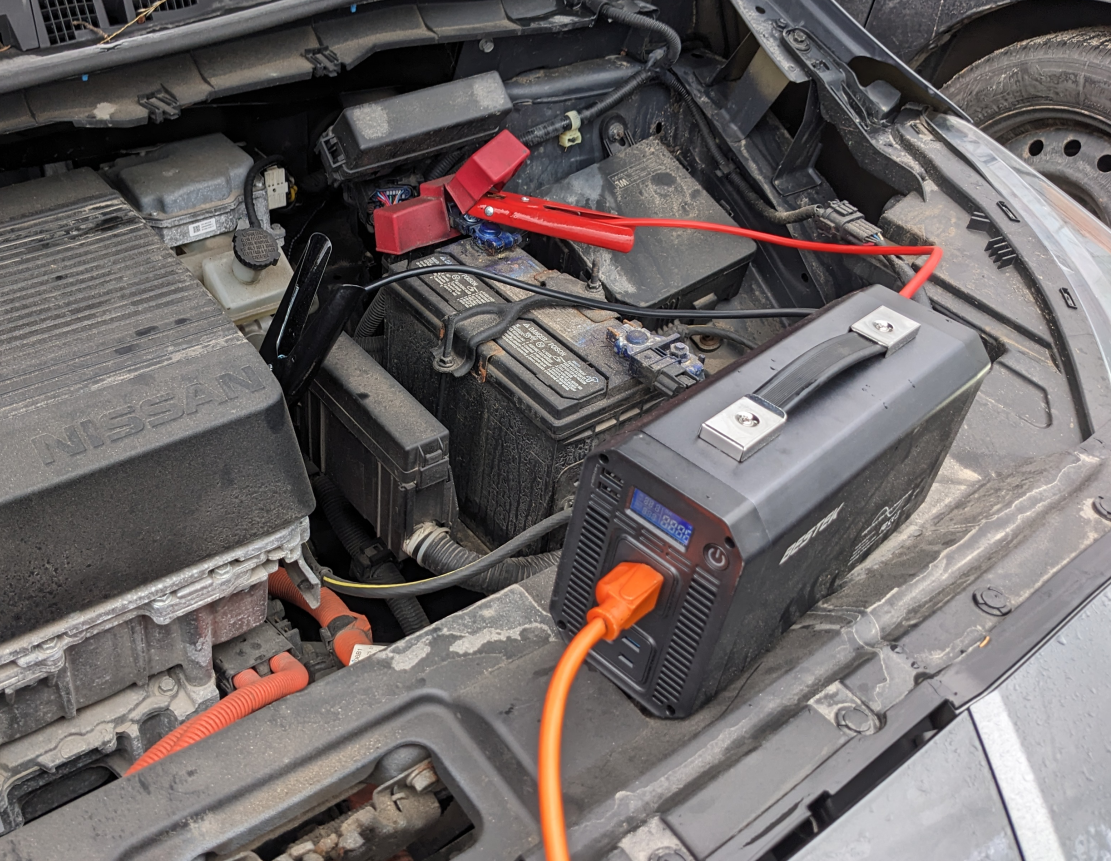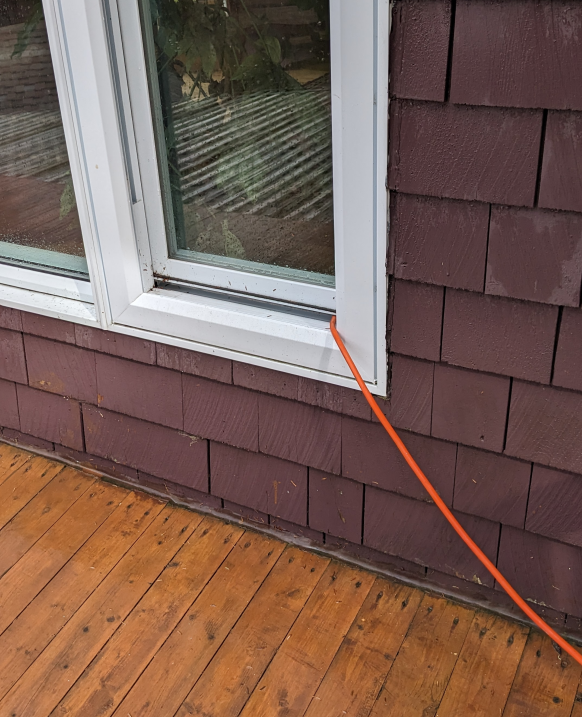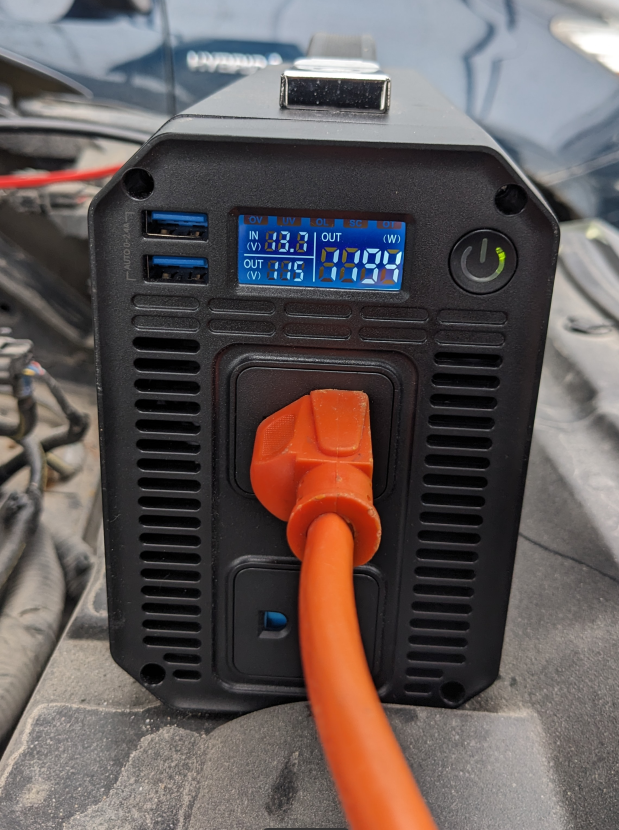Powerwall on wheels
I live in a moderately rural area of Quebec, and we get power outages several times a year. A lot of my neighbours have gas generators that they will turn on when the power goes out. These are loud and stinky, and just kind of ruin the vibe. We’ve always preferred turning the power outage into an adventure, reading by candlelight, playing games, and cooking everything on the barbecue. If it’s cold, we’ll light the fire and sleep huddled together in the living room.
Sometimes, though, it’s kind of nice to just make a cup of coffee, or like, open the fridge door, especially if the outages go on for longer than a few hours.
There are all kinds of pre-made solutions to this problem that don’t involve burning dead dinosaurs: Tesla sells one, Ecoflow sells another.
However, I’m much more excited to use things I already have to solve a problem than buy something new. Last year we bought a used Nissan LEAF. If you squint, you can see this is a big 40kWh battery on wheels that has a drivetrain capable of driving somewhere to fill itself up whenever it gets too low (it also comes with the benefit of being able to take the kids to school and carry groceries…). The powerwall doesn’t have that!
The LEAF doesn’t have a V2L connector like some newer EVs, but it does have a 12V battery that is charged directly by the main drive battery whenever the car is “on”. To this battery you can connect an inverter, and then run a long extension cable to the house.


The inverter is rated at 1000W, so I’m not powering any heaters with this thing, but it can output enough power for the modem, charging phones and computers, the electric piano, boiling a kettle, and keeping the fridge running.

If you are doing this yourself, it’s probably better to get a “pure sinewave inverter” to keep the fridge compressor happy.
When the amount of charge in the main EV battery drops below 30%, I’ll go drive to somewhere where there is electricity and charge the car back up.